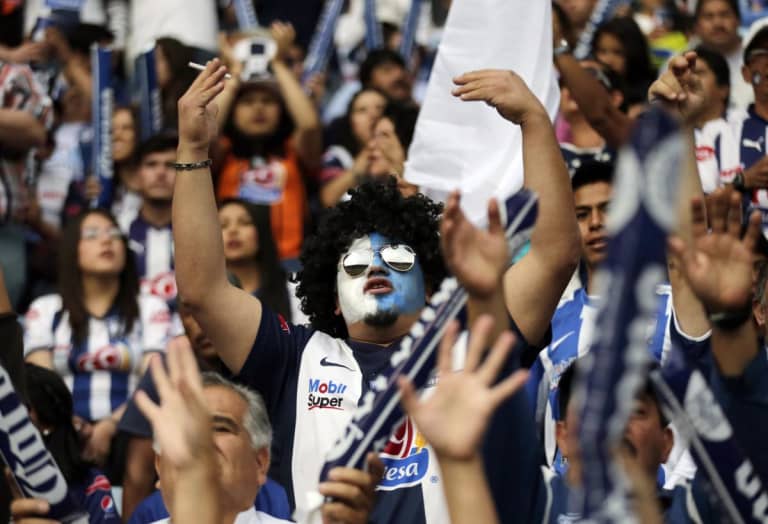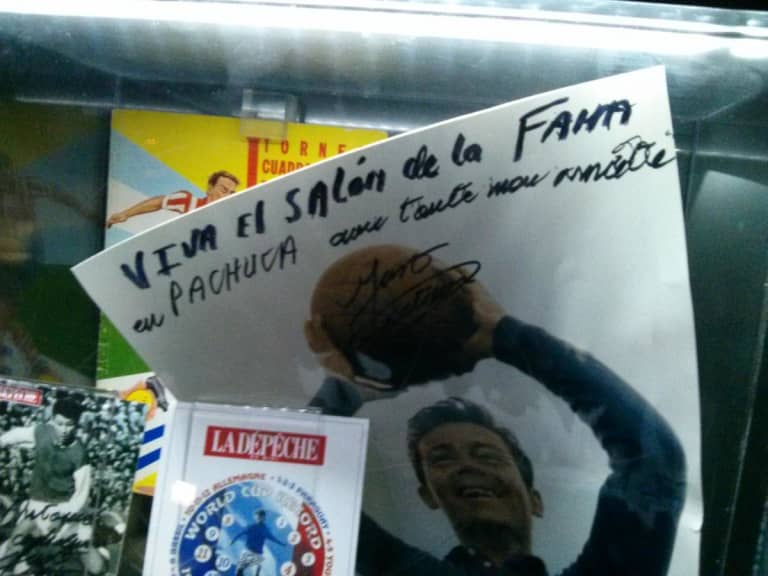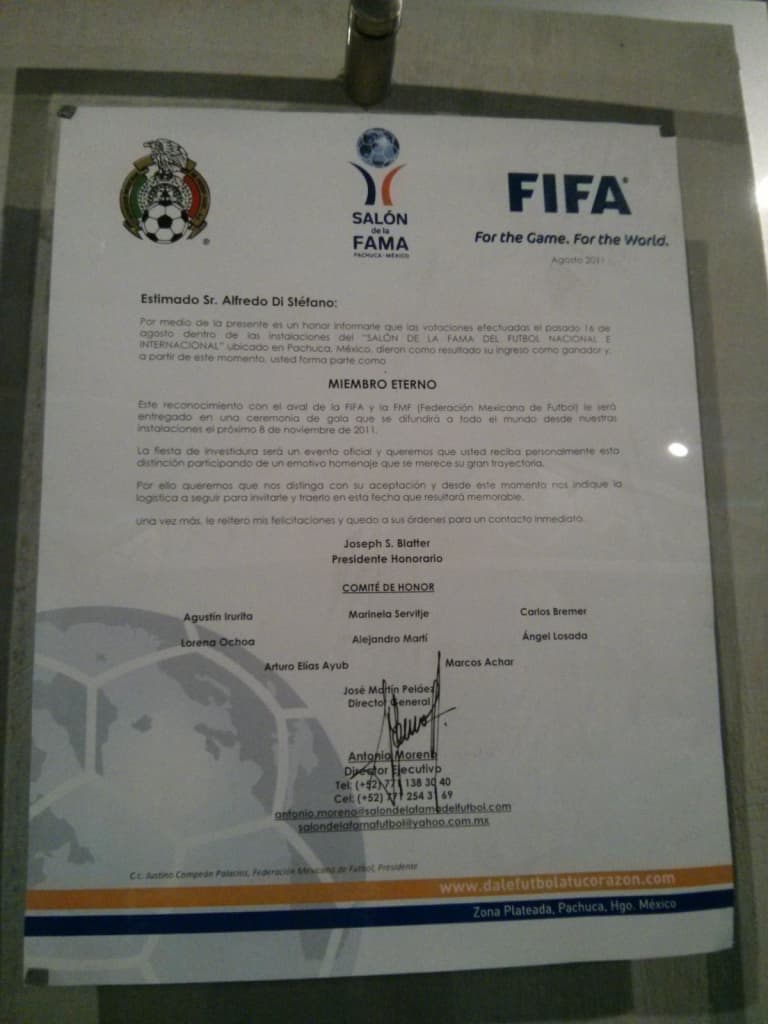PACHUCA, Mexico – The road to get here is unsettling.
Part of me thinks there should be a wealth of scents to discover on the way to the city where the Montreal Impact will play Los Tuzos, on Tuesday night, in the CONCACAF Champions League (10 pm ET; Fox Sports 2-US, Sportsnet One-CAN). As we zigzag our way north of Mexico City, we go past roadside barbecues and mountain villages, and there’s grass – grass! – which we Montrealers haven’t seen in months.
But even once we’re well out of the capital, there’s no other smell but exhaust fumes, with little oxygen to soothe our nostrils at a lung-busting altitude of 7,000 feet.
Ninety minutes later, after learning to breathe all over again, the van approaches an overpass. A massive H, for the State of Hidalgo, rests on the traffic island. On the edge of the overpass, we are welcomed to Pachuca.
This is where it all started for soccer in this country.
---

Under the north stand of the Estadio Hidalgo, CF Pachuca’s home, dozens of photographs celebrate the club’s history, as well as the city’s. One caption reads: “With the beautiful Hidalgo mines in the background, soccer was played. The English brought to Mexico the rules and the structure to play the game that sparked euphoria and passions.”
In short, ball games had been common in the Pachuca area before Englishmen showed up with a set of the Football Association’s rules. A group of Hidalgo historians were able to unearth a game played between two groups of miners in 1889, on the site of the modern-day Cuauhtemoc Street in Pachuca. Six years later, three teams would join forces to form Pachuca Athletic Club, the ancestor of Montreal's CCL opponents.
In November 2014, the State Congress unanimously approved a resolution naming Pachuca the birthplace of Mexican soccer, part of the State of Hidalgo’s cultural heritage.
If those miners who started it all could time-travel, they probably wouldn’t believe what their nascent pastime has become. According to the city government, only 20 mines remain in Real Del Monte, a 20-minute drive from Pachuca. Yet the area has a mining history dating back to 1551, and it was New Spain’s main producer of minerals for two centuries.
Nowadays, other industries have diversified the city's economy. And soccer helps.
---
Some say soccer is an art. Some say soccer is a science. Some say it’s neither.
In Pachuca, it’s treated as a science – an important one. The city is home to the University of Soccer and Sports Sciences, a property of Grupo Pachuca, owners of the football club.
Its campus opened in November 2001 in the northwestern part of the city. I reached out to University officials for a visit, but they hadn’t answered. Thankfully, the soccer gods intervened.
The Montreal Impact train at the Estadio Hidalgo on Monday night, and Pachuca have sent a representative to help out the Impact staff: Johnathan De Oliveira. 23 years of age. A former midfielder-turned-right-back for Pachuca’s youth teams with a full scholarship at the university. Now a fitness coach for Pachuca’s second team.
And Montreal-born.
“My player contract was up in January 2011,” he tells us, Québécois accent and all. “I wanted to return to Montreal and do the Impact tryouts, but I had to wait 11 months to do so. I would have done nothing for 11 months. So I started working with Pachuca as a fitness coach.”
De Oliveira is more than happy to tell a colleague and I about his school of the past few years.
“When I got here, the school had been open for at least six years,” De Oliveira says. “Before, it was only university classes. Two or three years ago, they started offering classes from elementary to university. It’s similar to the Impact academy, only the players study there as well. They can do their whole studies there, from the age of six. They get their full gear.
“The kids play in a local league, in Pachuca,” he continues. “If they win, they go to the national championships. When they turn 14, they join the Academy, from U15 to U20.”
His explanations are the next best thing to getting a tour of the facilities. I wouldn’t encounter the same difficulties at another of Pachuca’s symbols of its soccer history.
---

Driving into the heart of Pachuca, you don’t see many tall buildings. So when a 125-foot high soccer ball appears on the left, you take notice.
The Salón de la Fama del Futbol, the Soccer Hall of Fame, welcomes me with open arms. A week before my visit, an employee had answered my request, promising a guided tour and answers to every question I had.
My tour guide, Ricardo, takes my colleague and I to the huge ball. It really is massive, and why shouldn’t it be when FIFA backs the project?
Because, yes, this is the actual Hall of Fame. The one Hall to rule them all. FIFA studied other projects, Ricardo says, but they chose Pachuca in part because of its soccer history.
Opened in 2011, the Hall has 75 inductees from all over the world. Mia Hamm was inducted in 2013, alongside the likes of Franco Baresi, George Weah, Paolo Maldini and Bora Milutinovic.
Hamm is the only American inductee, but another American has earned a special recognition at the Hall. John C. York, currently co-chairman of the San Francisco 49ers, was key in establishing contacts between the Soccer Hall of Fame and the Pro Football Hall of Fame. The former adapted a version of the latter’s regulations.
“A player thus has to be retired for five years before he gets inducted,” Ricardo says. “No one’s going to vote for Messi or for Cristiano Ronaldo.”
Stairs take us all the way to the top of the building. Along the way, various artifacts remind us of the game’s past. Here’s a ball from the 1950 World Cup. A picture signed by Just Fontaine, the French forward who scored 13 goals in one World Cup. A replica of the Golden Boot Hugo Sánchez won with Real Madrid. One of Jorge Campos’s ridiculously colorful outfits.

Outside the big soccer ball, the Mundo Futbol zone is much noisier. Interactivity is king here. You can check how your jumping ability, acceleration and shot speed compares with the world’s best. You can play a real-life version of foosball, where you’re the little plastic guy stuck in one place trying to kick a ball. You can try your hand at radio commentary.
We go past a map of Mexico above which is written ‘In which mexican team would you like to play’ [sic]. Magnets with team logos on them are scattered all over. For Ricardo, this map shows that his workplace is not all fun and games.
“There’ll be groups of kids who come by,” he says. “And they’ll be asked to place every team on the right spot on the map. They learn some geographic principles.”
In the Hall of Fame next door, they’ll learn a bit of history as well. A history that is still being written. Pachuca is prominently featured, of course, and they’ll try to write history some more this Tuesday. On the way back to the hotel, my colleague asks the cab driver about the game. But he’s a Cruz Azul fan, and he’s not expecting a good crowd.
Some had told me the same. Others had disagreed. Johnathan De Oliveira was among the optimists. “A lot of people in the whole country are Pachuca fans because of the history,” he’d said.
They can’t all make it to the stadium on Tuesday. Maybe they’ll be happy. Maybe they won’t. But they’ll still have the history to fall back on.












